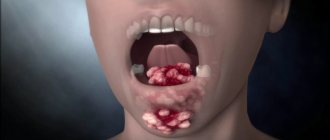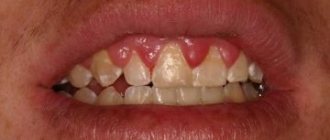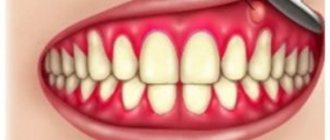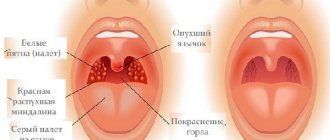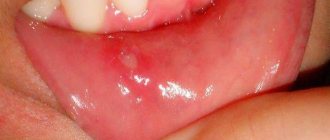Before you figure out whether you need lingual frenuloplasty surgery, find out what it is. The sublingual ligament is a membrane of mucous tissue located on the midline of the inner side of the tongue, which connects it to the lower jaw. The normal length of the hypoglossal ligament is 2.5-3 centimeters. The work of the facial muscles, mucous membranes, taste buds and bite depends on the length of the frenulum of the tongue. If the muscle is too short, then special plastic surgery is required. Tongue frenuloplasty surgery involves surgical intervention to eliminate problems that cause discomfort. To understand whether you need a procedure of this nature, read on.
The sublingual ligament or, as it is called, the frenulum of the tongue, plays an important role in the body. The main functions of this muscle are to fix the tongue in the oral cavity and prevent tongue retraction. The latter function is especially important for children and people with cancer. Thanks to the hypoglossal ligament, a person’s speech becomes clear and understandable. In the presence of defects and insufficient length of this muscle of the tongue, many problems arise that are solved with the help of a small incision. This procedure is called tongue frenuloplasty surgery and is performed in almost any medical center. The surgical operation is performed for medical reasons and requires compliance with certain rules.
Why is it necessary to remove the frenulum of the tongue?
The main reason for plastic surgery of the frenulum of the tongue is its small length. The short muscle interferes with a person’s diction and, at an early age, breastfeeding. Therefore, surgery is often performed on children with disorders of this nature. In newborns, problems with the hyoid ligament are noticeable already in the maternity hospital, and in children during the period of speech formation. Also, a short frenulum can manifest itself in adulthood in the form of orthodontic problems. If the short frenulum of the tongue is not removed, the front teeth will begin to grow with an inward slope, the growth of the lower jaw will slow down, speech will be impaired, an abnormal bite will form, periodontal diseases will occur, digestion will worsen, breathing will become difficult, the root of the tooth will be exposed, wearing braces and other orthodontic devices will become difficult. uncomfortable.
Article:
The sublingual frenulum is a membrane that is located under the tongue and connects the tongue to the sublingual space . How to determine whether the hyoid frenulum ? Indeed, the hypoglossal ligament ( frenulum ) can be of different lengths in different people. If a child can stick his tongue out of his mouth and at the same time its tip does not bifurcate in the shape of two semicircular petals due to the fact that the hyoid ligament , if he can lick the saucer and click his tongue, then he will most likely have no obstacles for making sounds that require raising the tongue to the palate .
In a 5-year-old child, the frenulum in a stretched state should be at least 8 mm.
A short hypoglossal ligament ( frenulum ) is a congenital defect consisting of shortening of the frenulum of the tongue ( hyoid ligament ).
What does this mean?
Short hyoid frenulum :
• can cause difficulty in the movements of the tongue, because it does not allow it to rise high.
• can lead to a displacement of the center of the tongue, its asymmetrical development and low mobility, which prevents the formation of the correct articulatory posture of some sounds.
• may also be the cause of impaired diction
• in some cases, it can provoke problems with the formation of the lower jaw, that is, the teeth may deviate and the necks of the teeth may be exposed. There is a risk of developing periodontitis and gingivitis. Therefore, a consultation with an orthodontist is necessary.
What to do?
There are two ways:
o Surgery
o Stretching of the hyoid frenulum
Even if the frenulum is somewhat shortened (equal to 8 mm), it is better to stretch it than to operate.
Start stretching your frenulum now . There is a set of exercises for stretching the hyoid frenulum . It may be that your efforts will help avoid further surgery to trim the hyoid frenulum .
Many exercises can be started from a very early age.
For the little ones, we can recommend the following exercises :
• “Lick the saucer.” Invite your child to lick the saucer like a kitten.
• You can reach for the spoon with your tongue.
• “Reach your tongue to your chin.”
• “Reach your tongue to your nose.”
• "Swing":
Open your mouth, reach with the tip of your tongue first to your nose, and then to your chin, then again to your nose, and then again to your chin.
This is how the swing swings.
Above the oak, above the spruce
We took off on the swing.
Tell me, would you be able to
Using your tongue to “pump a swing”?
• "Horse"
Smile, open your mouth. Click the tip of your tongue like a horse clicking. The mouth is open, the tongue should be wide. Make sure that the tip of the tongue does not turn inward and that the lower jaw remains motionless.
Let's go, let's go on horseback
The path is smooth.
A neighbor invited us to visit
Eat sweet pudding.
We arrived at lunchtime
And the neighbor is not at home.
You can sit on a toy horse (if there is one in the house, or you can sit on your mother’s lap.
Older children, along with the previous ones, can be given the following exercises:
• “Delicious jam”
Open your mouth slightly, your tongue moves along your upper lip from top to bottom, but not from side to side (as if licking jam). The lower jaw should be motionless.
• “Painter” Invite the child with his tongue, like a “brush”, to paint the ceiling in the “house” - mouth. To do this, you need to open your mouth and stroke the palate with the wide tip of your tongue, making movements back and forth (from the teeth deep into the oral cavity and back)
It's time to paint the rooms.
A painter was hired.
We lower the jaw lower,
We help the painter
• "Drum"
Show your child how to imitate a drum by beating a beat with your tongue. To do this, you need to open your mouth, smile slightly and, with the tense tip of your tongue, tap on the alveoli (tubercles behind the upper incisors), repeatedly and clearly, in one breath, pronouncing the sounds “D-D-D.” At first you should knock slowly, and then increase the tempo.
Ask the child to repeat. Make sure that the child does not close his mouth during the exercise. Compete to see whose drum can beat the longest.
• "Fungus"
Open your mouth wide, press your wide tongue flat against the roof of your mouth and suck on it. Hold your tongue in this position for 5-10 seconds. The tongue will resemble the cap of a fungus, and the stretched hyoid ligament will resemble its thin leg. Then, “unstick” your tongue and close your mouth.
• "Accordion"
Show your child how to use your tongue to make an accordion. To do this, you need to suck the wide tip of your tongue to the roof of your mouth, as in the “Mushroom” exercise, and then, without peeling off your tongue, open and close your mouth. The hyoid ligament ( frenulum ) will act as an accordion, which either stretches to its full length, then contracts.
I play the harmonica
I open my mouth wider,
I'll press my tongue to the sky,
I'll move my jaw lower.
Remember!
Exercises must be performed systematically, gradually increasing the time they are performed (the number of repetitions of each exercise, only then will the desired effect be achieved.
The sooner you start classes with your child, the faster you will achieve the desired result.
The older the child, the more difficult it is to stretch the hyoid frenulum (targeted stretching of the hyoid frenulum using speech therapy massage is an unpleasant procedure, quite painful for the child). Stretching is most successful up to 5 years.
How to recognize a short frenulum
You can recognize a short frenulum of the tongue visually. Limited jaw movement, a cord protruding from the connective tissue, and difficulty protruding the tip of the tongue outside the mouth are all signs of a short hypoglossal ligament. In newborns, this kind of tongue frenulum can be detected through feeding. If the sucking process is prolonged and the baby cannot grasp the mother’s nipple, then this means that you urgently need to see a doctor. In older children, the problem is accompanied by speech impairment and a lisp.
Basic treatment methods and contraindications
Ideally, dissection of the frenulum should be performed in the first days of the child’s life, but there are 2 options for the development of events.
In infancy, the incision is made by a surgeon using scissors, which at this stage of life is absolutely painless, since there are still no nerve endings in this area. After this, the baby is applied to the breast in order to calm and prevent the development of bleeding.
How to treat a short frenulum of the tongue in older children? Also, the operation will only be more painful, since the membrane thickens over the years. Typically, frenuloplasty is performed - transfer of the site of fusion of the frenulum, followed by suturing.
How to trim the frenulum of the tongue: methods and technologies
Methods and technologies for performing frenuloplasty surgery depend on the nature of the problem. There are three types of procedure: changing the place of attachment of the fold, making an incision using a laser or scalpel. The most complex types of surgical techniques are dissection with a scalpel and changing the attachment site of the fold. Plastic surgery of this type of hyoid ligament lasts half an hour and begins with an anesthetic injection or the use of an anesthetic. Next, the doctor trims the frenulum with a scalpel and applies a suture, which is removed a week after the operation. Laser plastic surgery of the hypoglossal ligament is performed using diode radiation. The surgery is performed using a laser by an experienced dentist. For quick rehabilitation in the postoperative period, you need to avoid hot, spicy and too salty foods. For children, doctors recommend laser surgery because it has a number of advantages over conventional surgery. Laser plastic surgery is bloodless, lasts ten minutes, eliminates bacteria and leaves no traces. This type of surgery is considered the safest. Make an appointment with your doctor and find out what type of hypoglossal ligament surgery you need.
Causes of the defect
The most common cause of the defect, provoking half of the cases, is a genetic predisposition and hereditary factor.
Another reason is the use of hormonal medications and antibiotics by a pregnant woman. Moreover, the most dangerous period is the first trimester of gestation. This factor also influences the formation of other oral pathologies.
A certain motivating factor in the formation of pathology can be late pregnancy - after 35 years, but this is not at all necessary and has a negligible effect.
The exact causes of this problem have not been studied, so sometimes it appears even without obvious reasons.
When surgery should not be performed
Despite the fact that plastic surgery of the hyoid ligament is simple to perform, there are contraindications to it. Doctors prohibit surgery if:
- chronic diseases;
- osteomyelitis;
- oncological diseases;
- blood diseases;
- viruses;
- caries;
- diseases of the oral mucosa;
- mental disorders;
- pulpitis;
- problems with blood clotting.
Be careful, this list can be expanded depending on the individual characteristics of the body. Before undergoing hypoglossal ligament surgery, make an appointment with your doctor. Only a qualified doctor can give complete information according to your case.
Diagnostics
How to identify the problem yourself
The correct length of a baby's frenulum is considered to be 8 mm and above. To take the measurement, you should pull back the lower lip so that the baby opens his mouth. If the tongue is attached at the very edge and does not reach the lip, then most likely there is a shortening of the frenulum under the tongue.
For older people, a characteristic syndrome is identified when problems are detected with pronouncing individual letters (usually a lisp) and seeking help from a speech therapist.
How does a doctor diagnose?
Diagnosis of pathology is carried out by collecting anamnesis and visual examination of the patient
There are many child health specialists who can diagnose frenulum shortening:
- pediatrician;
- surgeon;
- neonatologist;
- dentist;
- orthodontist;
- ENT;
- speech therapist.
Diagnosis of pathology is carried out by collecting anamnesis and visual examination of the patient. The Haselbaker test, which takes into account the size of the frenulum and the mobility of the tongue, can help determine the disease.
In particular, according to the doctor’s method, it is considered normal if the bridge is longer than 0.8 cm, and the baby can easily reach his lips with his tongue and can lift it to the sky.
When is the best time to have lingual frenuloplasty?
According to doctors, the most suitable age for surgery to repair the hypoglossal ligament is from one to nine years. This choice is explained by the fact that at this age children have a change of baby teeth and a bite is formed. For newborns, the sublingual ligament of the tongue is cut after 5-10 days of birth, but for adults there is no difference in age. The best and most painless moment to perform frenuloplasty surgery is when the lateral teeth have not grown and the central teeth have already erupted a little. At the first sign of a defect, consult a doctor immediately.
What can pathology threaten and interfere with?
The anomaly harms not only the baby, but also the grown child.
Among the negative consequences, professionals highlight the most dangerous:
- A short frenulum greatly affects the development of the baby and causes a lot of problems for an older child, so it needs to be eliminated as soon as possible
improper breastfeeding and weight loss;
- disruption of the digestive system and teeth due to insufficient chewing;
- speech defects, disturbances in the position of masticatory organs;
- snore;
- breathing pathologies;
- insomnia.
In general, despite the painlessness and absence of a threat to life, a short frenulum greatly affects the development of the baby and causes a lot of problems for an older child, so it needs to be eliminated as soon as possible.
Problems with breastfeeding
This consequence of the anomaly concerns not only the health of the baby, but also his mother. Therefore, we should talk about this in more detail.
The baby's anatomy is designed in such a way that he actively uses his tongue when latching on to the nipple. However, the short frenulum does not allow him to use this organ, so the gums and lips come into play.
Note! This causes a lot of stress on the chewing apparatus, which makes the baby tired. His jaw may tighten, and while feeding he will cling and bite the breast strongly, causing discomfort to the mother.
After such feeding, the nipple becomes as if pinched or beveled, like the edge of a purchased lipstick. Due to increased friction, a watery bubble forms on its front part, and sometimes the skin cracks, which is accompanied by severe pain.
Due to the weakened retention of the nipple in the mouth, the baby begins to grab onto it with all his might. Increased squeezing to express milk leads to pain, which is dampened by the nourishing fluid that moisturizes the breasts. Therefore, pain may not occur immediately, but some time after eating.
On the left is the correct position of the tongue. On the right - short frenulum of the tongue
No need to wait for a certain moment
When the first signs of a tongue tie appear, consult a doctor. A defect of this nature is especially dangerous at an early age, since during this period bite and speech are formed. To avoid problems and rid your child of complexes, consult a doctor. You need to choose a clinic and surgeon carefully, paying attention to important details. Pay attention to the price; tongue frenuloplasty surgery cannot be too cheap or unreasonably expensive. Take care of yourself and your loved ones, health consists of little things!
Signs of pathology
A congenital defect of the frenulum is detected by a number of signs. They are visible to the naked eye and are diagnosed by a doctor during the initial examination of the newborn.
The main one is the unusual shape of the tongue with the tip slightly pulled down. It looks a bit like a small heart.
There are secondary factors that manifest themselves during feeding in the baby and the mother:
- The baby smacks his lips and releases the nipple, which increases the duration of the feeding session and, in general, it becomes quite difficult to feed the baby.
- Without eating, the baby gains weight worse.
- Due to poor nutrition, colic occurs more often in a child. He regurgitates food.
- The pathology does not allow the newborn to hold the mother's breast correctly, which is why cracks and bite marks remain on the nipple, and less milk is produced.
If these symptoms appear, you should take a close look at the child.
What complications can there be?
As mentioned above, the operation is simple and quick, and almost never leads to complications or negative consequences. However, this does not mean that you can ignore the doctor’s instructions regarding the postoperative period. You should listen carefully to what you can and cannot do after pruning. Otherwise, you can provoke the development of an inflammatory process, because plastic surgery always involves a violation of the integrity of the soft tissues. It is important to maintain hygiene and follow dietary guidelines.
Another unpleasant consequence of the operation in older patients can be a rather large scar or fold. This situation is extremely rare and requires a repeat procedure to remove the defect.
Laser frenulum trimming
Today in dentistry, lasers are actively used as part of various procedures. It is often used, among other things, to trim a shortened bridle. In this case, no stitches are required, because at the moment of cutting the tissue, the laser literally seals the edges of the wound. Among the indisputable advantages of laser cutting, experts highlight the following points:
- lack of blood,
- additional sterilization of injured tissues,
- sealing the edges of the wound,
- no need for stitches,
- rapid tissue healing,
- reducing the risk of wound infection,
- no discomfort after surgery.
Recently, lasers have been increasingly used for frenulum correction.
It should be noted that the use of a laser as part of frenuloplasty slightly increases the cost of the procedure. In addition, not all dental centers have the necessary equipment.
Description of the clinical picture
If the pathology is pronounced, it may be accompanied by characteristic signs. Among the features of the clinical picture, dental experts highlight the following points:
- it is not possible to stick out the tongue beyond the boundaries of the oral cavity, since it is tightly attached to its bottom,
- when trying to stretch the tongue, it noticeably bends, taking on the shape of an arc,
- when trying to press the organ to the palate, its tip seems to slightly bifurcate due to excessive tension,
- when folded, a clicking sound is produced, and the organ takes the shape of a groove.
The photo shows a shortened frenulum of the tongue.
It is better to entrust the diagnosis of the problem to an experienced pediatric therapist or dentist. A visual examination is usually sufficient to make a diagnosis.
